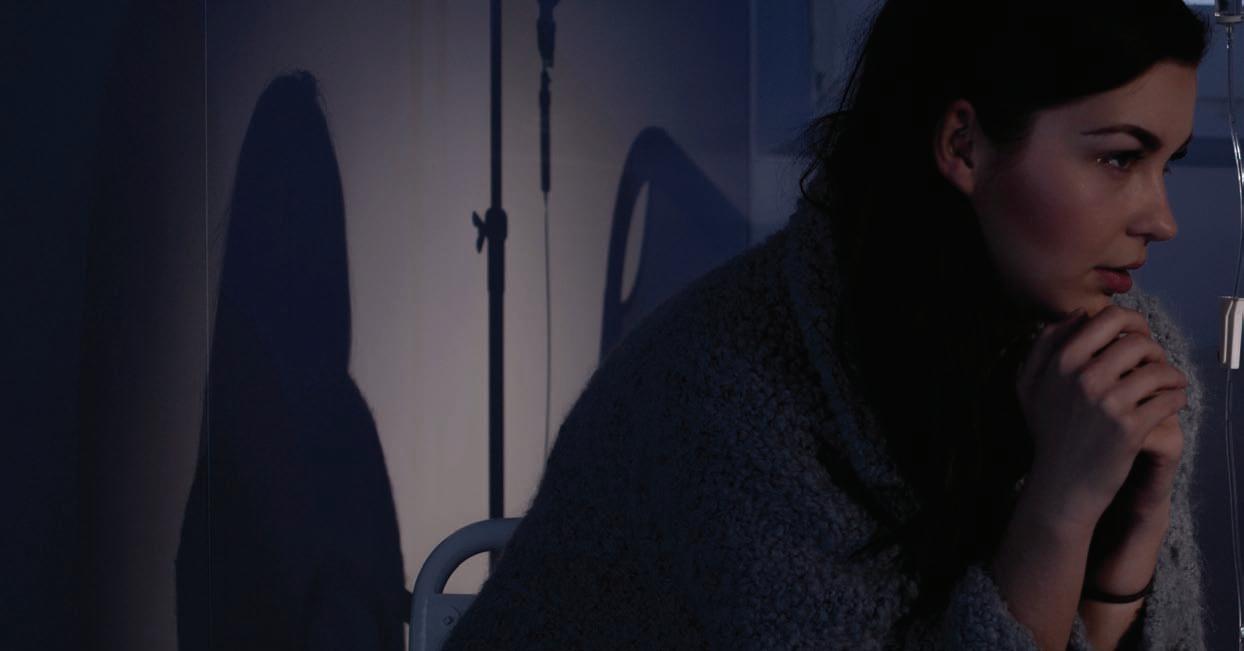
5 minute read
INSURANCE
INSURANCE By Steve Wright
Dicing with death and insurance cover
Terminal Illness: a signifi cant risk that should be insured separately, writes Steve Wright.
Not all death comes quickly. The unfortunate truth is that a very large proportion of death is preceded by a period of terminal illness. As insurance advisers we are usually pretty good at calculating the financial loss that happens on death, particularly to families.
The biggest is the loss of the deceased’s income, which is completely lost forever (well until they would likely have retired anyway) and there are often additional expenses.
Sufficient amounts of life cover protect against this financial loss, meaning that while the family still have to cope with the emotional loss of losing a loved one, at least they don’t have to worry about where the money will come from.
REDUCED LIFE EXPECTANCY
But what about terminal illness? By terminal illness I mean a diagnosis of illness from which recovery is unlikely and where life expectancy is dramatically reduced, typically no more than 12 months. Terminal illness often brings a host of unforeseen expenses and lost income: • There may be expensive and unfunded medical treatment, perhaps overseas, that may not be covered by medical insurance because it is experimental or not conventional, for example. These costs, including travel and accommodation, can easily reach six figures. • Then there is loss of income, if the terminally ill client has income cover that might start paying something but it won’t pay for their spouse to stay away from work. Frankly, if any member of my family was terminally ill and only had a limited time, the last thing I’d want to be thinking about is work. • The terminally ill client may have life goals they want to accelerate, the so-called ‘bucket list’. Money will be needed immediately to satisfy these.
Few would be prepared to deny a terminally ill person the best care available. I don’t know a single parent, for example, who would not use up their last dollar, go into significant debt, to fund medical treatment that might prolong or make more comfortable, their terminally ill child’s life. Terminal illness, particularly of a child, can result in the family losing their home.
SECURITY FOR FAMILY
Many good life cover policies will also pay the full sum insured on terminal Illness but here is the problem: life cover is mostly used to provide financial security to the family after the death of the client. If a significant chunk or even all of their life cover is used to fund a period of terminal illness, death might yet see the family financially destitute. This means the life cover you have put in place for them does not do its job. Also, meaningful amounts of life cover are simply not available for children under 10 (it is against the law for insurance companies to pay more than $2,000 plus a return of premiums on the death of children under 10 years of age).
I believe terminal illness is a risk separate from death and as advisers we should be aware of its financial implications. Terminal illness as a risk should be specifically


identified, the financial risk quantified and suitable protection recommended. Advisers can simply add the terminal illness risk to the life cover sum insured (make sure the product you select will actually pay on terminal illness) but this is very inefficient because the client is forced to pay also for additional money payable on death that they don’t need. While a large proportion of deaths is preceded by terminal illness, not all deaths are, so terminal illness cover by itself should cost much less than full Life Cover.
COVERING RISKS
Fortunately, a number of products are available to allow you to recommend extra insurance to cover the risks of terminal illness which do not require the client also to pay for cover on death. Some life cover products include a ‘terminal illness booster’, which pays an additional sum insured on terminal illness and a standalone terminal illness cover is now also available.
Standalone terminal illness cover is especially useful for those clients who don’t need lots of Life Cover but who would still need financial protection against terminal illness, for instance: • Retired people, who may have a decent retirement nest egg and as such have no need for life cover (because the financial impact of a death is small, some funeral costs only). However, terminal illness and its associated costs represent a significant risk. Terminal illness of the client or their spouse could completely derail their happy retirement plans if their retirement funds are plundered by terminal illness. Suitable insurance can provide funds to cover the costs of terminal illness so that the retirement nest egg remains available to fund retirement. Terminal illness cover, like many other life disability and medical covers, are important and valuable for protecting assets, too. • Young adults, just starting out in life with no dependents, are another potential client with limited need for life cover but who may want the choices a large lump-sum can give if they become terminally ill.

• Then there are the children for whom life cover in sufficient amounts is not available. The terminal illness of a child represents a very big financial risk to their parents. Fortunately terminal illness cover is very inexpensive for children because the risk is quite low. This relatively low risk does not mean we should ignore the risk because the consequences if the risk does occur are very large. Parents don’t need to lose their home and all their assets because they are unfortunate enough to have a child terminally ill – there is an inexpensive protection solution.
Treating terminal illness as a risk separate from death will allow you to better protect your clients against a very significant financial risk and improve the quality of your advice. • Steve Wright has qualifications in law, economics, tax and financial planning and is general manager product at Partners Life. . ✚



